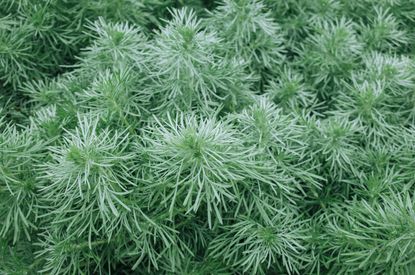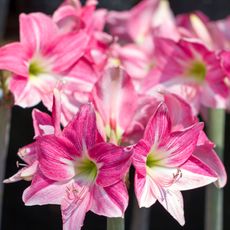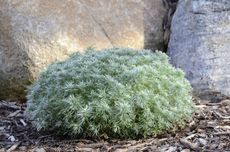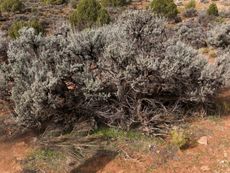How To Grow Artemisia: Caring For Silver Mound Plants


Fine, delicate foliage and an attractive, mounding habit are just a couple of reasons gardeners like growing the silver mound plant (Artemisia schmidtiana 'Silver Mound'). As you learn about growing and caring for silver mound plant, you will likely find other reasons to grow a few more in the garden.
Uses for Silver Mound Artemisia
This attractive plant is useful as a spreading border for the flower bed, when used as edging in the perennial garden and growing along paths and walkways. The delicate foliage retains its shape and color during the hottest months of summer. Of the Asteraceae family, the silver mound Artemisia is the only member with a prostrate, spreading habit. Unlike others of the species, the silver mound plant is not invasive. Often called silver mound wormwood, this cultivar is a relatively small plant. Scattered among tall, flowering summer blooms, the silver mound plant serves as a long lasting ground cover, shading out growing weeds and further reducing silver mound care.
Information on Caring for Silver Mound
The silver mound plant performs best when located in a full to partial sun location in average soil. Planting this specimen in less than fertile soil decreases some aspects of silver mound care. Soils that are too rich or too poor create the condition of splitting, dying out or separating in the middle of the mound. This is best corrected by division of the plant. Regular division of the silver mound Artemisia is a part of caring for silver mound, but is required less often if planted in the proper soil. The silver mound Artemisia is a small, resilient plant, resistant to deer, rabbits and many pests, making it an excellent addition for outlying rock gardens or beds near wooded or natural areas. Silver mound Artemisia care, other than division every two to three years, consists of infrequent watering during periods of no rain and a mid-summer trim, usually around the time the insignificant flowers appear in late June. Trimming keeps the plant tidy and helps it maintain its mounding shape and avoid splitting. Plant the silver mound Artemisia in your garden or flower bed for attractive, silver foliage and low maintenance. Drought and pest resistant, you may discover it is a desirable addition to your garden.
Gardening tips, videos, info and more delivered right to your inbox!
Sign up for the Gardening Know How newsletter today and receive a free download of our DIY eBook "Bring Your Garden Indoors: 13 DIY Projects For Fall And Winter".

Becca Badgett was a regular contributor to Gardening Know How for ten years. Co-author of the book How to Grow an EMERGENCY Garden, Becca specializes in succulent and cactus gardening.
-
 Plants To Propagate In Winter: 6 Of The Best Options For Cultivating Winter Cuttings
Plants To Propagate In Winter: 6 Of The Best Options For Cultivating Winter CuttingsWe usually associate propagation with spring, but there are a few plants you can grow from cuttings in cold months. We round up the best plants to propagate in winter
By Mary Ellen Ellis
-
 Try These 8 Pink Amaryllis Varieties That Look Stunning Indoors And Out
Try These 8 Pink Amaryllis Varieties That Look Stunning Indoors And OutWhile not quite as prevalent as the traditional red flowering type, the pink amaryllis is a beautiful addition to the home – and here are eight of the best
By Bonnie L. Grant
-
 Artemisia Winter Care: Tips On Winterizing Artemisia Plants
Artemisia Winter Care: Tips On Winterizing Artemisia PlantsWinter care for Artemisia is fairly minimal, but there are a few tips and tricks to remember so the plant has the best chance of survival over the cold season. This article will help with information on caring for Artemisia over winter.
By Bonnie L. Grant
-
 Growing Southernwood: Care And Uses For Southernwood Herb Plant
Growing Southernwood: Care And Uses For Southernwood Herb PlantOne of the lesser-known herbs, or rather underutilized in some regions, is the southernwood herb plant, also known as southernwood Artemisia. Learn more about this plant in the article that follows.
By Amy Grant
-
 Sagebrush Plant Information: Growing Facts And Uses For Sagebrush Plants
Sagebrush Plant Information: Growing Facts And Uses For Sagebrush PlantsSagebrush is a common sight along roadsides and growing sagebrush plants in the home landscape provides a natural look for the open field or pasture. Learn more in this article.
By Bonnie L. Grant